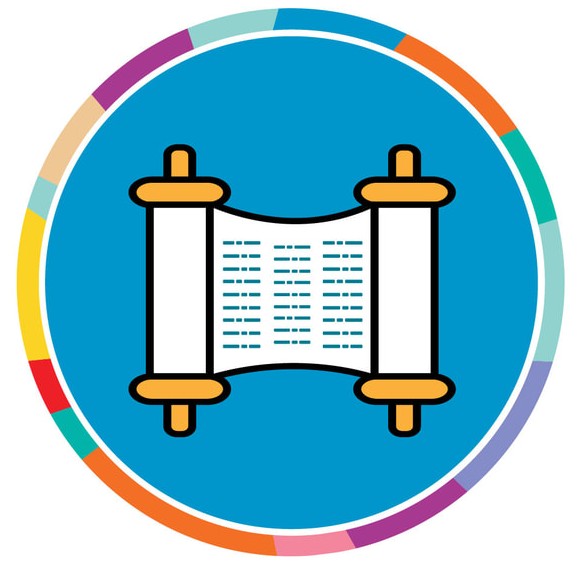The D’var Torah is more than just a speech—it’s a moment for your child to express their voice, reflect on sacred texts, and share a meaningful message with the community during their Bar or Bat Mitzvah.
In this guide, we’ll show you how to support your child in crafting a D’var Torah that’s authentic, insightful, and uniquely theirs.
What Is a D’var Torah?
A D’var Torah (Hebrew: דבר תורה) literally means “a word of Torah.” It’s a short sermon, usually 3–7 minutes long, that interprets the weekly Torah portion and connects its message to contemporary life. Most B’nai Mitzvah include this speech as a core part of their ceremony.
Step 1: Read the Torah Portion Together
Begin by reading the Parashat HaShavua (weekly Torah portion) your child will be chanting from. Use a bilingual Chumash or online tools like Sefaria to read the portion’s content.
Ask open-ended questions:
- What is happening in this story?
- Who are the main characters?
- What values or conflicts do you notice?
This shared reading sets a foundation for interpretation and insight.
Step 2: Identify a Core Theme
Help your child find a theme in the Torah portion that resonates with them. It could be something moral, emotional, or personal—such as courage, kindness, justice, leadership, or family.
Examples:
- “Joseph forgave his brothers—can I learn to let go of anger?”
- “Moses stood up for others—how can I be an advocate?”
- “The Israelites were afraid to leave Egypt—how do I face change?”
Tip: Keep a notebook or Google Doc of themes, quotes, and ideas.
Step 3: Connect Torah to Real Life
Encourage your child to connect their chosen theme to something personal—school, family, friendships, current events, or identity. This is what makes a D’var Torah memorable and heartfelt.
Questions to explore:
- Have you faced a situation where this theme applied?
- Can you think of a time when someone showed this value to you?
- Why does this theme matter to you at this moment?
💬 A good D’var Torah feels like a story, not a lecture.
Step 4: Build a Simple Structure
Guide your child to write their speech with a clear beginning, middle, and end. Here’s a basic outline:
- 1 Introduction
- State the Torah portion and a brief summary.
- Mention the theme they’ll focus on.
- 2 Body
- Quote or paraphrase a key verse.
- Explain what it means.
- Connect it to a personal story or example.
- Reflect on the lesson or challenge it presents.
- 3 Conclusion
- Reaffirm the message.
- Thank those who helped (family, teachers, rabbi).
- Share a final blessing or thought.
Step 5: Encourage Authentic Voice
Let your child speak from the heart. The D’var Torah doesn’t need to be scholarly—it just needs to be sincere. Avoid overly complex language or trying to sound like an adult.
Ways to support voice:
- Ask them to talk first, then write.
- Record conversations and transcribe ideas.
- Use bullet points, then flesh them into sentences.
- Read the draft aloud together for tone and clarity.
Step 6: Practice, but Don’t Memorize
Once the speech is written, practice delivering it out loud multiple times. Help your child:
- Speak slowly and clearly
- Make eye contact (when possible)
- Use natural hand gestures
- Emphasize key words and pauses
A printed speech or tablet is perfectly acceptable. Memorization is not required—confidence is.
Step 7: Emphasize Growth, Not Perfection
The goal of writing a D’var Torah isn’t perfection—it’s reflection. Let your child know that the effort they’re putting in is already a major accomplishment.
Celebrate the process:
- “You thought deeply about the message.”
- “I’m proud of the way you connected that to your life.”
- “That part really made me think.”
At Ceremonies.pro: We’re Here to Help
Need more support? At Ceremonies.pro, we provide personalized coaching for D’var Torah writing, professional tutoring, and emotional preparation. Whether your child needs help brainstorming or polishing their delivery, we’re honored to be part of their spiritual journey.




